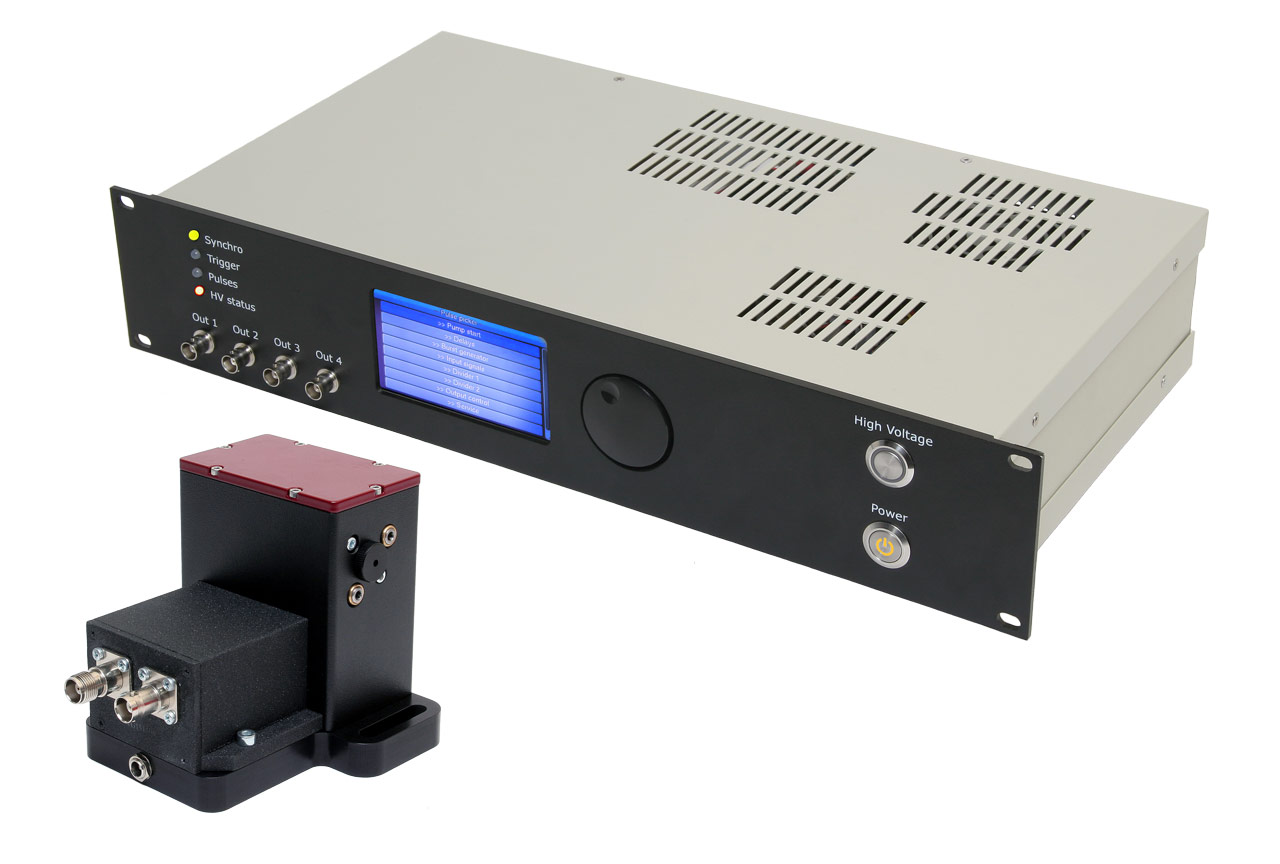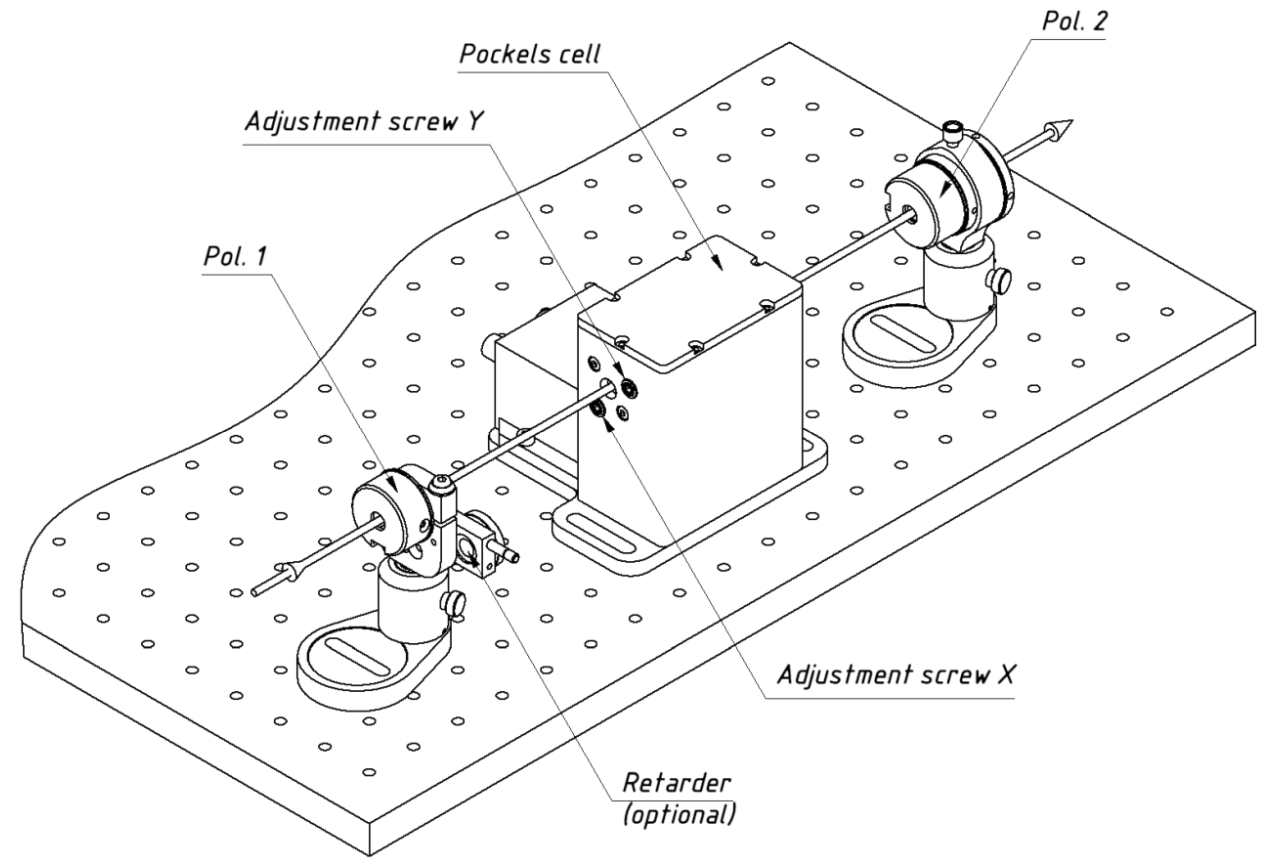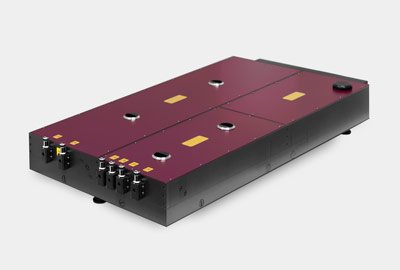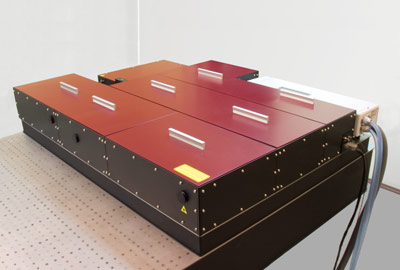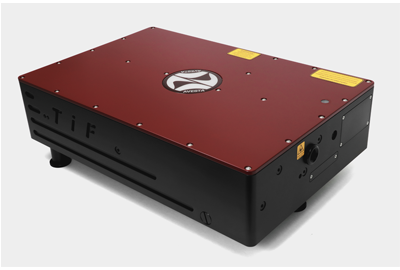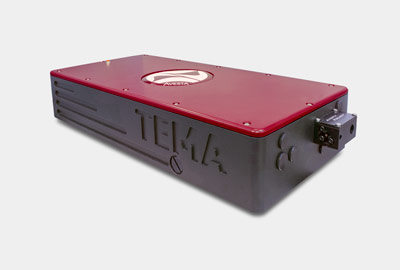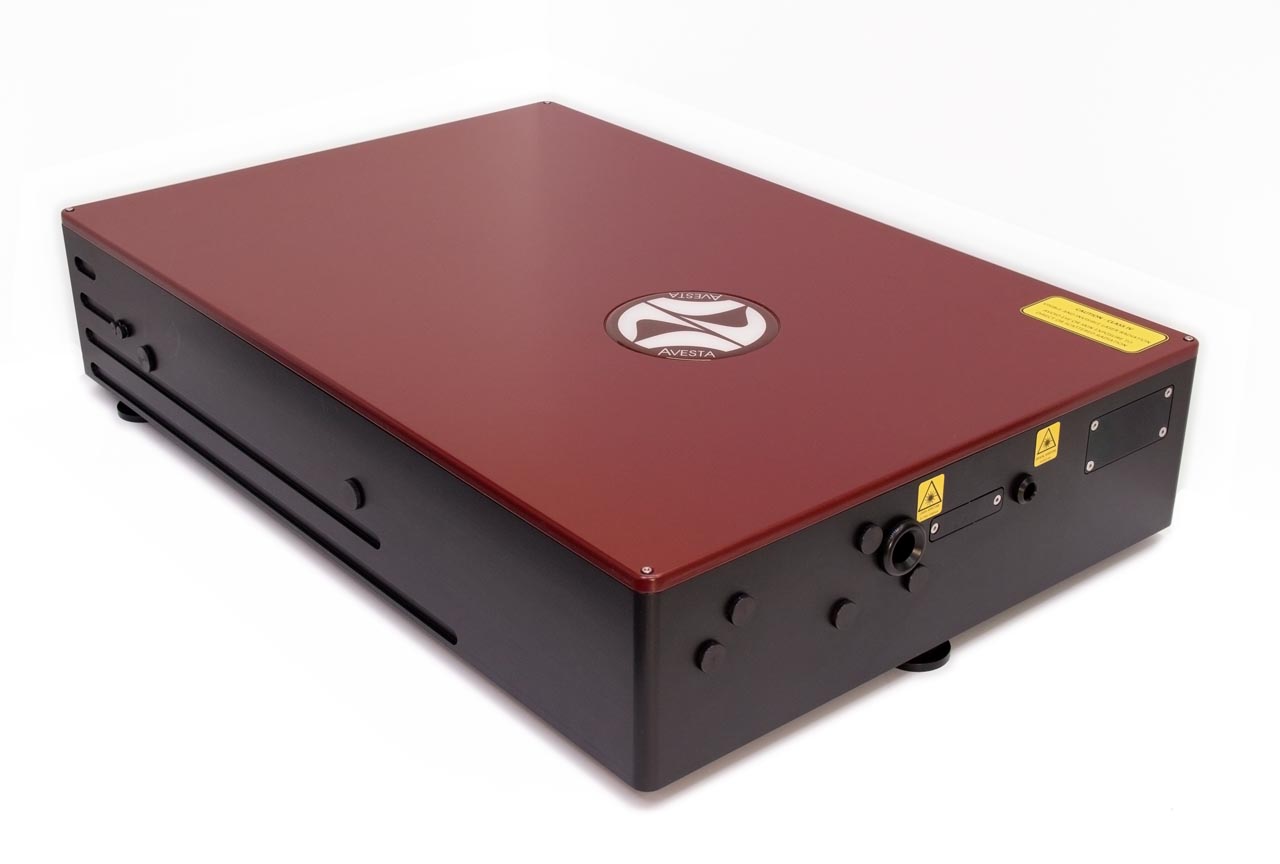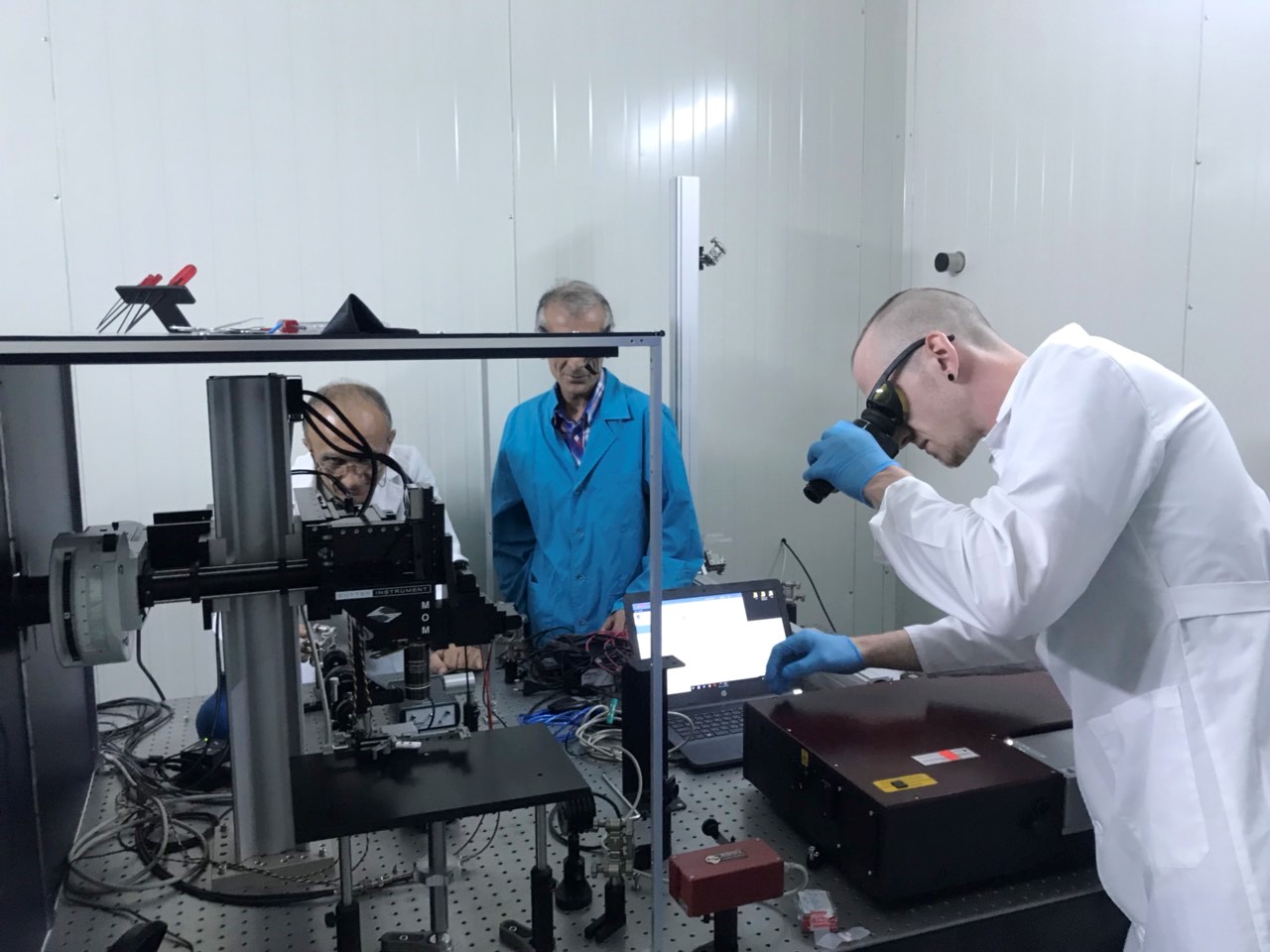OG-V. Pulse Pickers with Adjustable Gate Open Time
| OG-V-D | OG-V-B | OG-V-R/K | |
| Electrooptic crystal | DKDP | BBO | RTP or KTP |
| Operational wavelength range (standard models) | 510-540 nm / 700-1000 nm / 1000-1100 nm / 1250 nm | 510-540 nm / 700-1000 nm / 1000-1100 nm / 1250 nm | 1000-1100 nm / 1500-1600 nm / 1550+780 nm |
| Possible custom wavelengths | 340 to 1280 nm | 200 to 2200 nm | 1000 to 2700 nm |
| Minimum repetition rate of picked pulses | single-shot | ||
| Maximum repetition rate of picked pulses (standard models) | 1 kHz | 1 kHz / 10 kHz / 50 kHz / 100 kHz | |
| Clear aperture | 6 mm (up to 20 mm upon request) | 2.5 mm (up to 5 mm upon request) | 3.5 mm (up to 10 mm upon request) |
| HV pulse (gate) shape | quasi-rectangular | ||
| HV pulse (gate) length (at level 10%) |
20-500 ns, adjustable | 20-3000 ns, adjustable (up to 10 us upon request) | |
| Rise time (at level 10-90%) |
7 ns | ||
| Contrast(1) | >100:1(1) | >1000:1 | |
| Pockels cell voltage | up to 10 kV | up to 4 kV | |
| Optical scheme | half-wave (quarter-wave upon request) |
half-wave/quarter-wave at λ<600 nm; at λ>600 nm - quarter-wave or half-wave with double crystal cell | half-wave (quarter-wave upon request) |
| Trigger | internal/external | ||
| Complete system transmission at central wavelength | >85% (PC + two Glan-Taylor prisms, default package) >90% (PC + a Glan-Taylor and a Rochon prism, upon request) >98% (Pockels cell only) |
||
| Input optical train repetition rate | 2 MHz …150 MHz with internal or external trigger with optical or electric sync to input train; 1 Hz…2 MHz only with external trigger signal(2) | ||
| Sync source for internal trigger mode | optical/electric | ||
| Additional control modes | by edge / by level / built-in burst generator with internal or external trigger | ||
| Channel delay time | 0...10 us (up to 1 ms upon request) | ||
| Cooling | passive | passive at up to 3 kHz output rate, water-cooled(3) at 10 kHz and higher | |
| (1) - energy ratio of a picked and any non-picked pulse. The given contrast values are valid for adjacent pulses. Actual contrast with DKDP crystals is defined by piezoelectric ringing effect and depends on exact operational parameters. The contrast is better when the duration of HV pulse is shorter and HV pulse amplitude is lower. (2) - when operating with 1 Hz…2 MHz input pulse train, an external trigger signal must be used. Such a signal must lead the optical pulse by 0.25-3 us, must be rigidly in sync with the pulse to be picked and must have jitter of less than 200 ps; (3) - the HV generator unit requires cooling to support operating temperature below 35°C. Water cooling is required when operating at output frequency of 10 kHz and more (water flow 1 L/min, water temp. 20-22°C, tap or building-scale supply may be also be used if permitted). Heating power to be dissipated does not exceed 80 W even at the highest frequencies (a water chiller is not included and may be supplied separately). |
|||
The following applications might be pointed out when using pulse pickers with adjustable transmission gate time with femtosecond and picosecond lasers:
- selection of groups of adjacent pulses (bursts) from a train of pulses;
- control of regenerative amplifier operation: injection of a seed pulse into a cavity and ejection of the amplified pulse out of the cavity;
- usage as optical shutters (fast optical modulators) and Q-switch cavity applications;
- selection of single laser pulses in case of high jitter in relation to electric trigger pulse.
The OG pulse picker consists of a certain optical setup and an electronic control and power supply unit.
Optical setup of a pulse picker comprises two crossed polarizers with a Pockels cell placed in between. Pulse selection is performed with the use of the Pockels effect — a quasi-rectangular high-voltage electric pulse induces birefringence in the Pockels cell's optical crystal allowing precise rotation of the polarization plane of a certain laser pulse or a group of adjacent laser pulses depending on the duration of the high-voltage pulse (transmission window). Then this or these pulses may be separated from a train of consecutive pulses by using a polarizer.

Electronic control unit of a pulse selector is built using programmable logic components and contains such built-in modules as optical and electronic synchronization, trigger pulse generation, frequency division, multi-channel delay signal generation, high-voltage drivers. The unit allows for multiple usage scenarios given below for integration in various laser setups:
- external or internal trigger;
- synchronization to optical (built-in photodetector) or electric signal;
- two independent delay channel groups, each with its trigger and synchronization signals; spare channels may be used as general purpose delay channels for triggering other experimental equipment (e.g. oscilloscopes, pump lasers, streak-cameras etc.);
- additional control modes with triggering by edge/level of an external signal or via a built-in burst generator allow formation of various output pulse patterns;
- up to 4 synchronized Pockels cells may be driven by a single electronic control unit.
Optional solutions for demanding applications:
- multi-channel Pockels cell, i.e. a cell in which up to 4 high-voltage generators may be connected to a single optical crystal with adjustable delay between high-voltage pulses of each generator; such a cell may be used to select several closely placed pulses in a train of pulses or used as a single Pockels cell both for injection and ejection purposes in a regenerative amplifier setup.
- combination of fixed HV pulse channel and adjustable/wide fixed HV pulse channel on a single Pockels cell:
- pulse pickers with two consecutive Pockels cells for suppression of depolarization at high average optical power ratings and increase of overall contrast ratio of the picker unit up to 50 dB;
- provision to install power supplies for additional Pockels cells (total number of cells per control unit depends on exact cell type) at time of purchase, but the additional cells themselves may be purchased later;
- extended choice of polarizers, namely Rochon prisms (increased transmission) or thin-film dielectric polarizers (increased damage threshold);
- optical setup may be combined onto a single optical breadboard with adjustable feet.
What is a "quarter-wave optical scheme" and when should it be used?
Even technical capabilities of modern high-voltage generators still have their performance limits as is the case with all equipment. In a number of cases reasonably obtainable high-voltage pulse amplitude is not sufficient to rotate the polarization plane 90° per single pass through an electro-optical crystal, as it happens in a simple half-wave scheme. A quarter-wave scheme provides one of the solutions to pick pulses with high voltage being 2 times lower than in the half-wave scheme. In this case the radiation passes through the electro-optic crystal twice, in forward and backward direction.
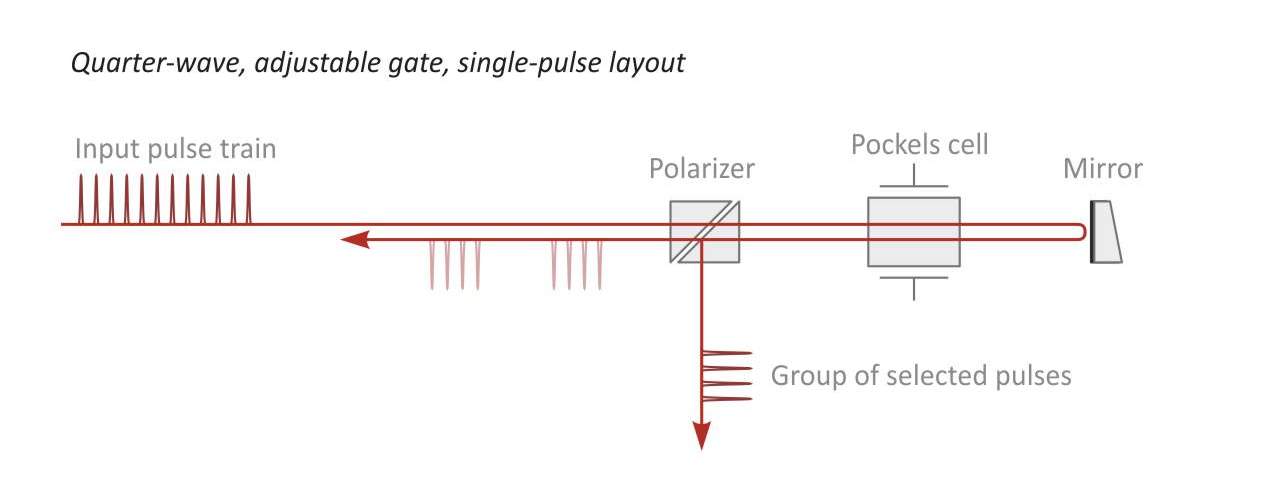
However, such a scheme is not void of disadvantages: the "idle" beam of unpicked pulses propagates backwards closely to the path of the incoming laser radiation and may influence or even damage the incoming optical pulse source. This disadvantage may be alleviated by tweaking the returning mirror, using a Faraday isolator or increasing the distance between the elements.
The quarter-wave scheme is naturally used in cases when a Pockels cell is placed in an optical layout which by design already features double pass sections (e.g. in linear cavities).
Related products
Latest News
Ti:S oscillator with up to 3 W output power at 100 fs
We have ramped up the maximum available output power for the TiF-100 series to more than 3 Watts at 800 nm, 100 fs, 80 MHz. The tuning range has also been extended to 720-950 nm, while an optional modification that covers 850-1040 nm is also available. The system features a high-power low-noise integrated DPSS laser […]
TiF-100ST-F6 femtosecond Ti:S oscillator with Frep locking for multiphoton microscopy at CANDLE, Armenia
The TiF-100ST-F6 femtosecond Ti:S oscillator with a built-in pump laser, also equipped with the ALock PLL electronics unit for pulse repetition rate locking to an external RF source has been installed at the Synchrotron Research Institute’s CANDLE facility in Armenia. The setup has been developed and commercialized during the joint Russia-Armenia project supported by FASIE (Innovation […]



